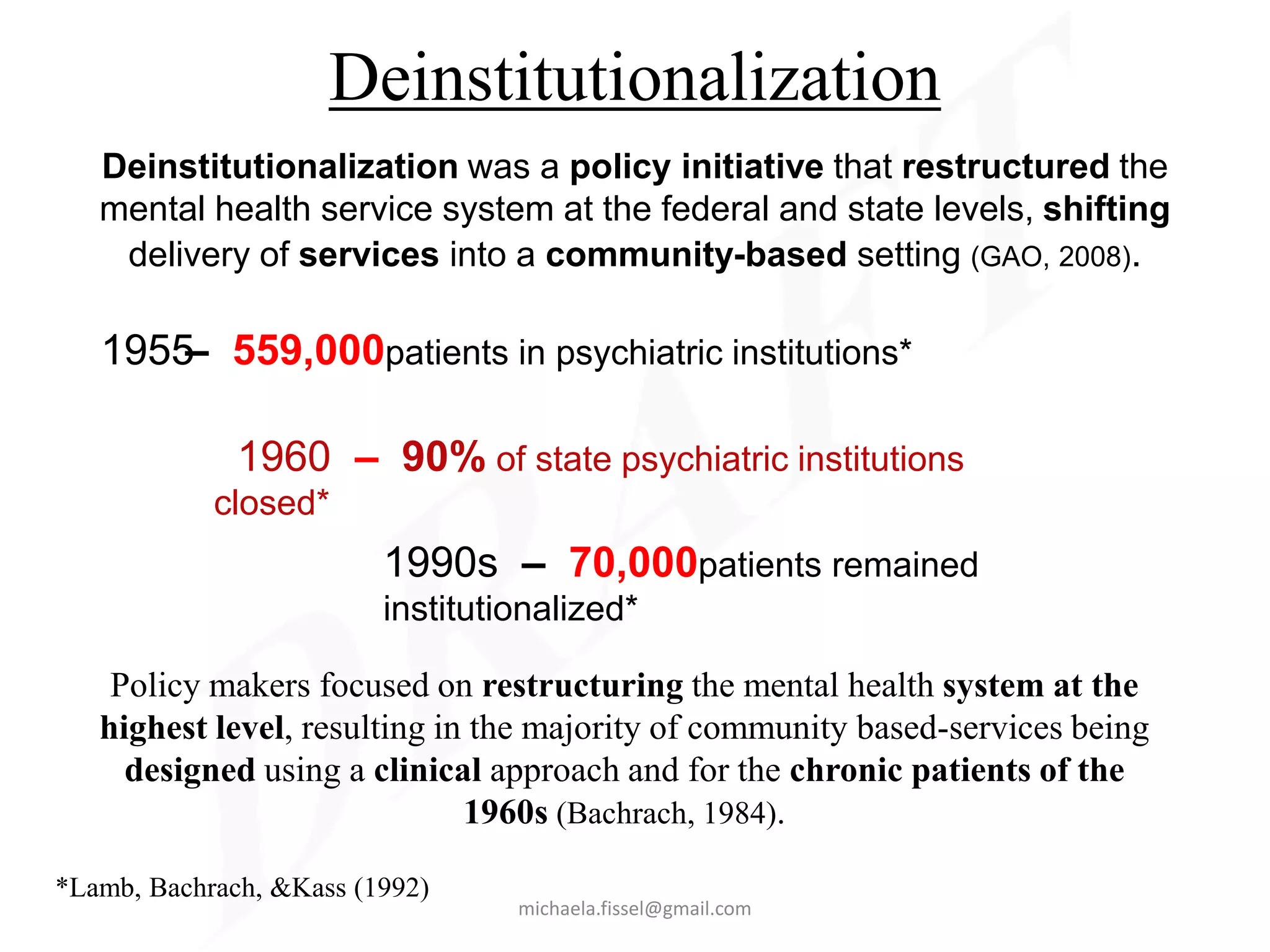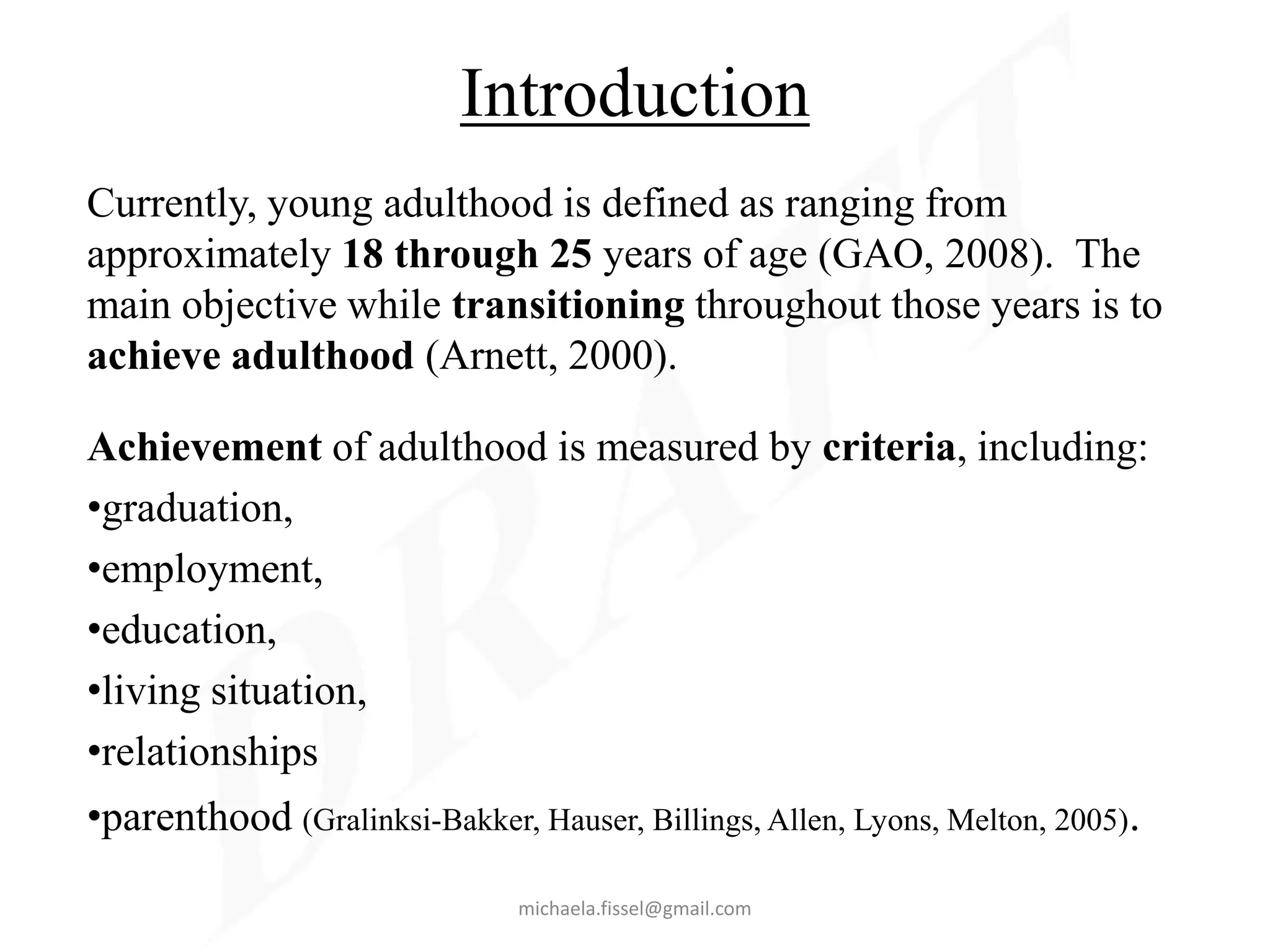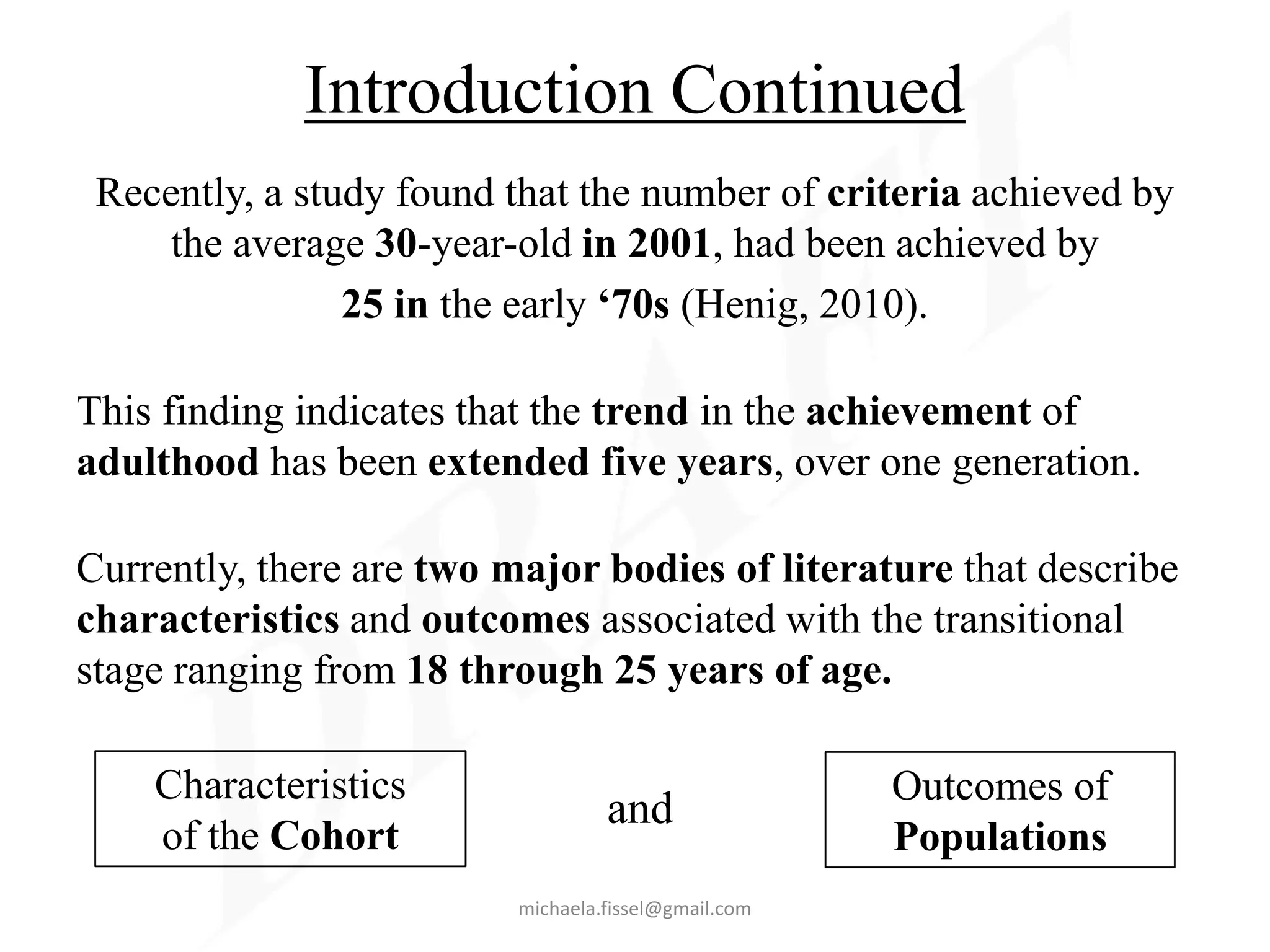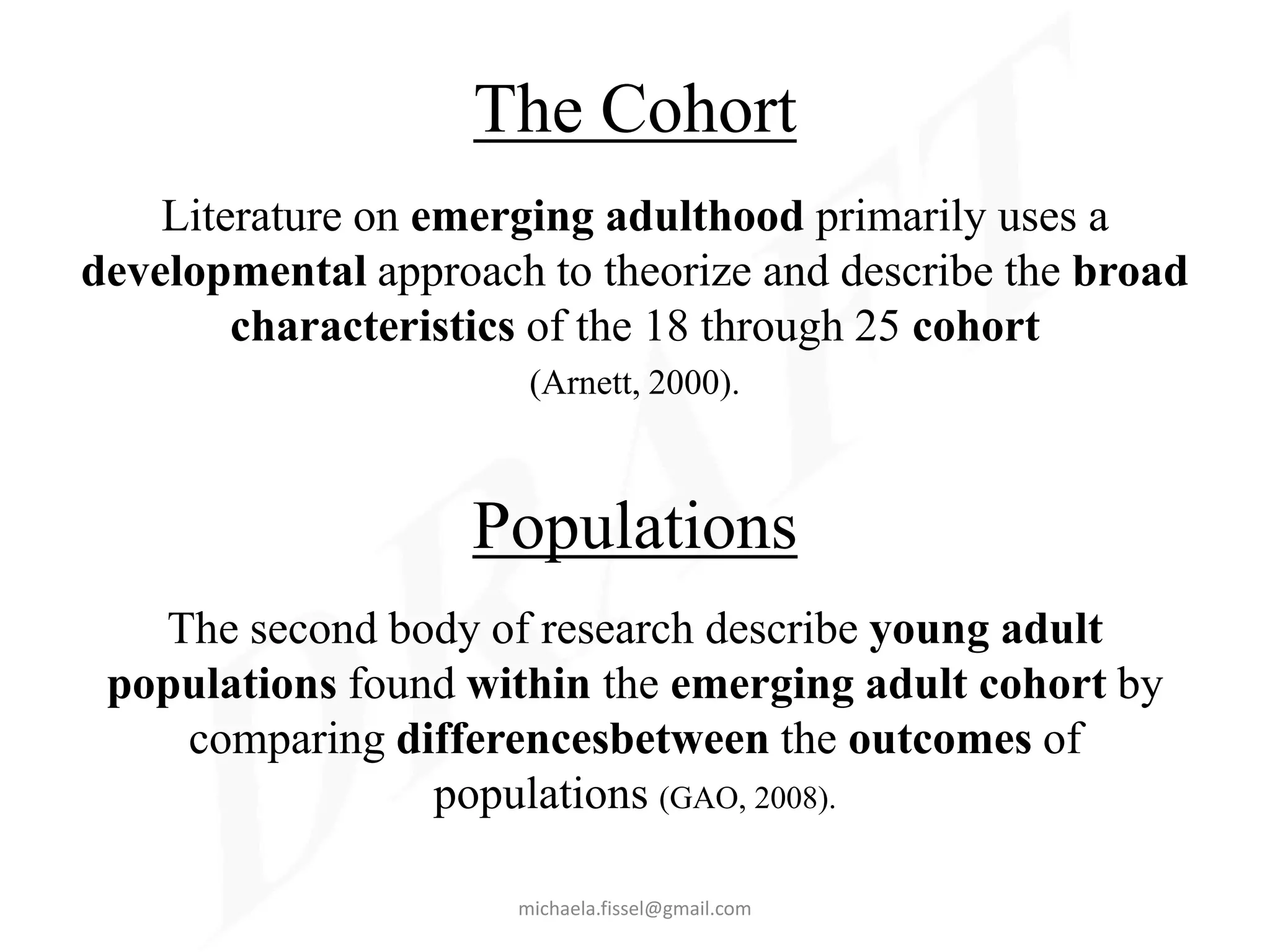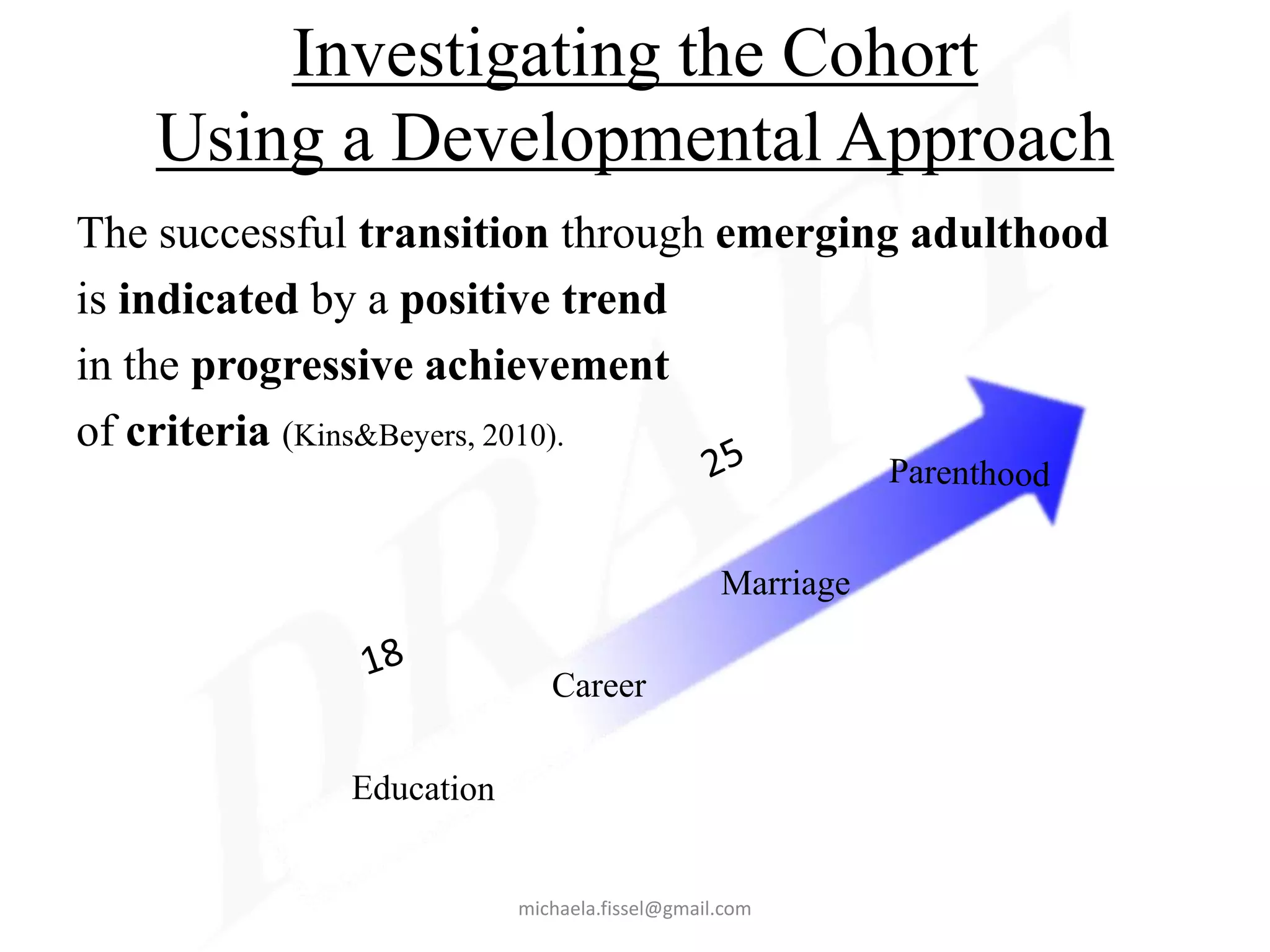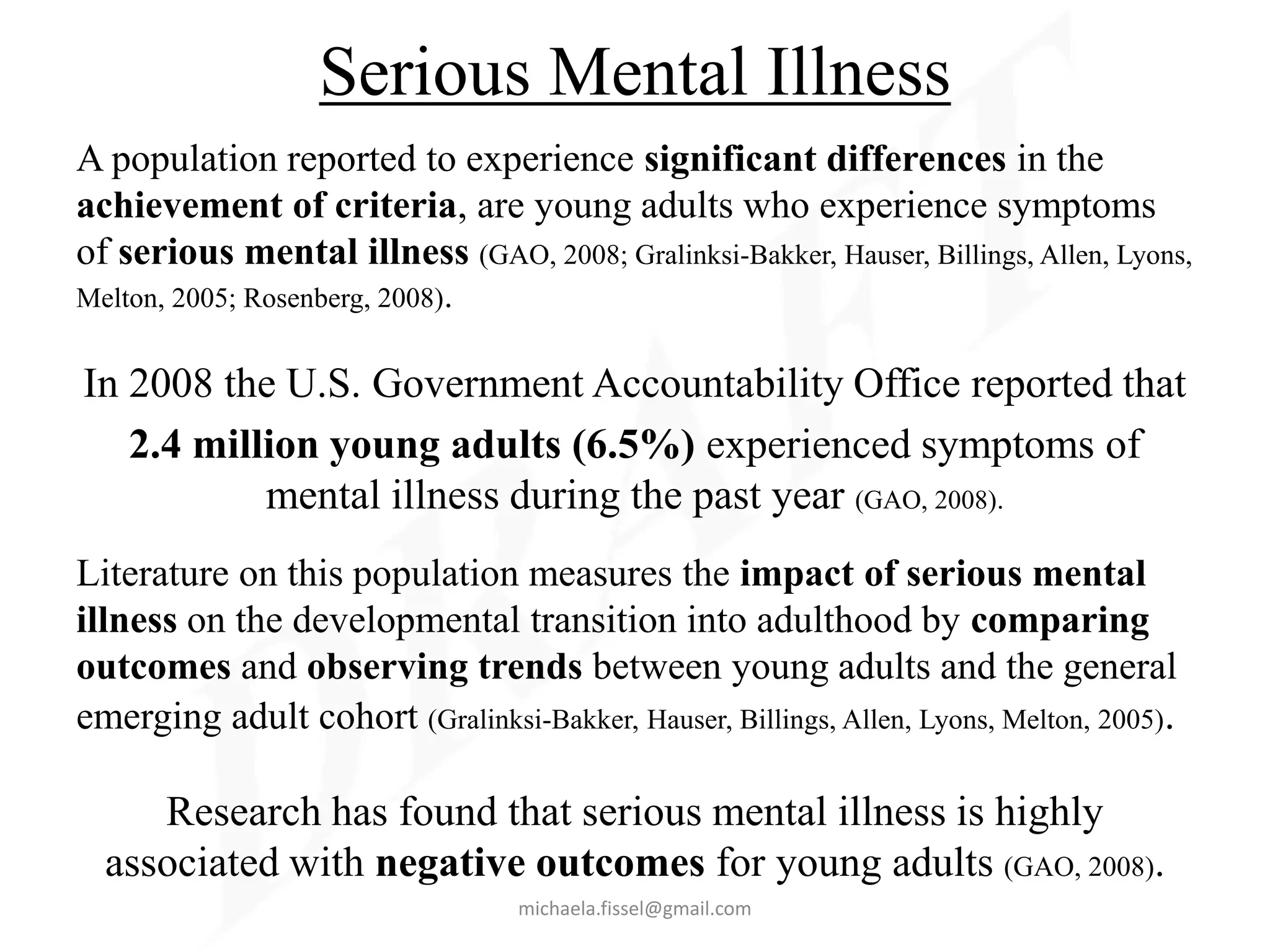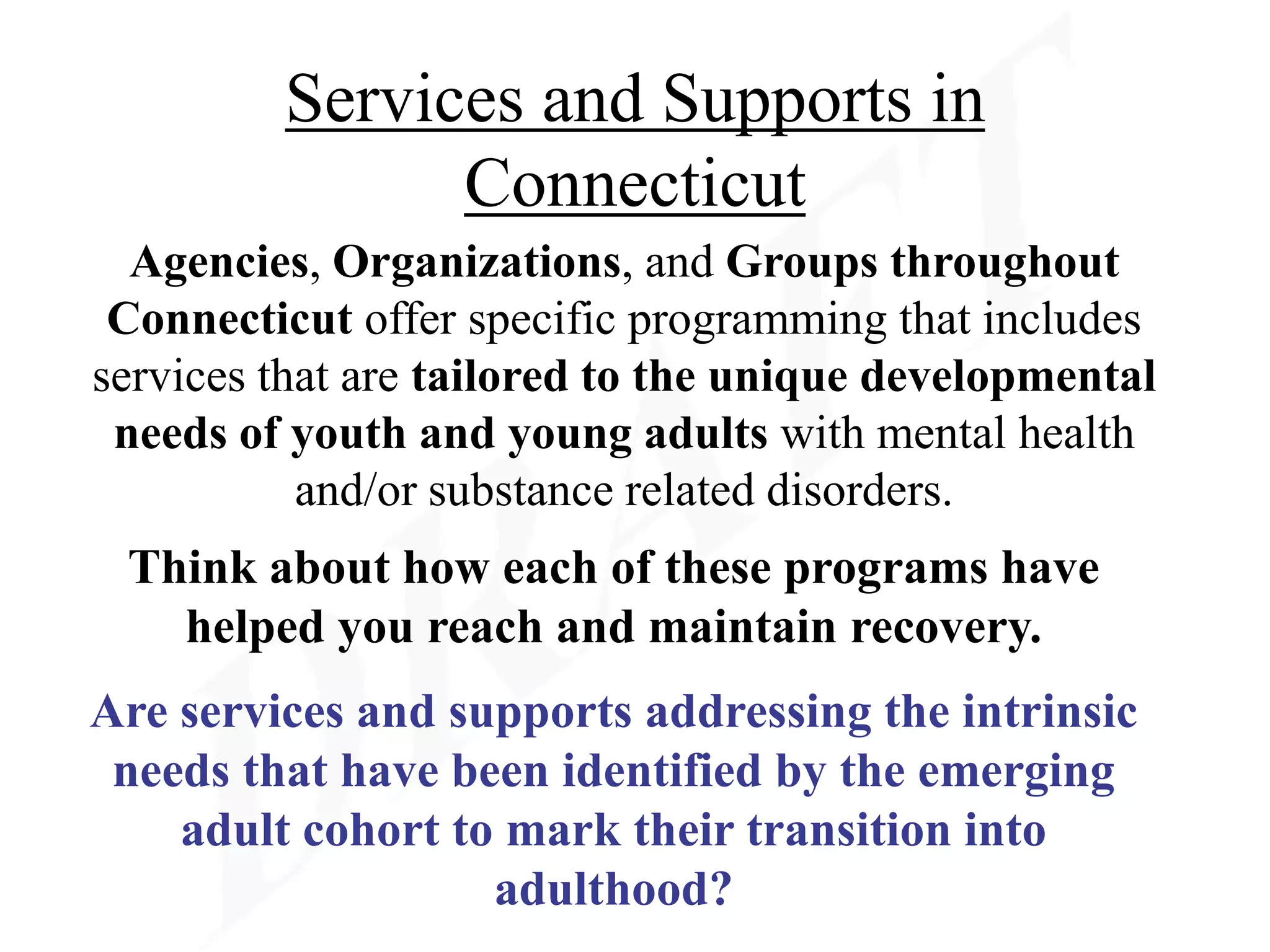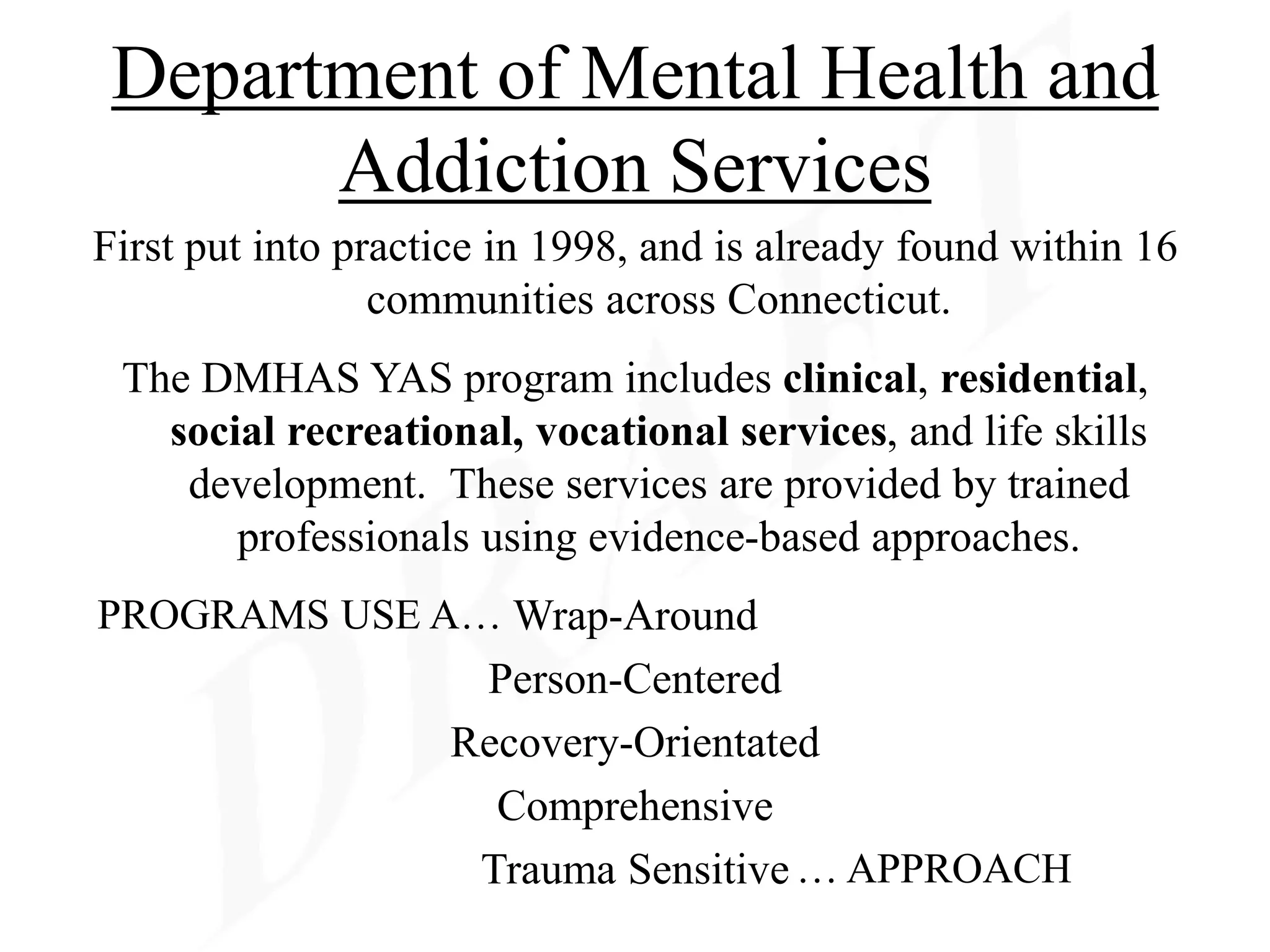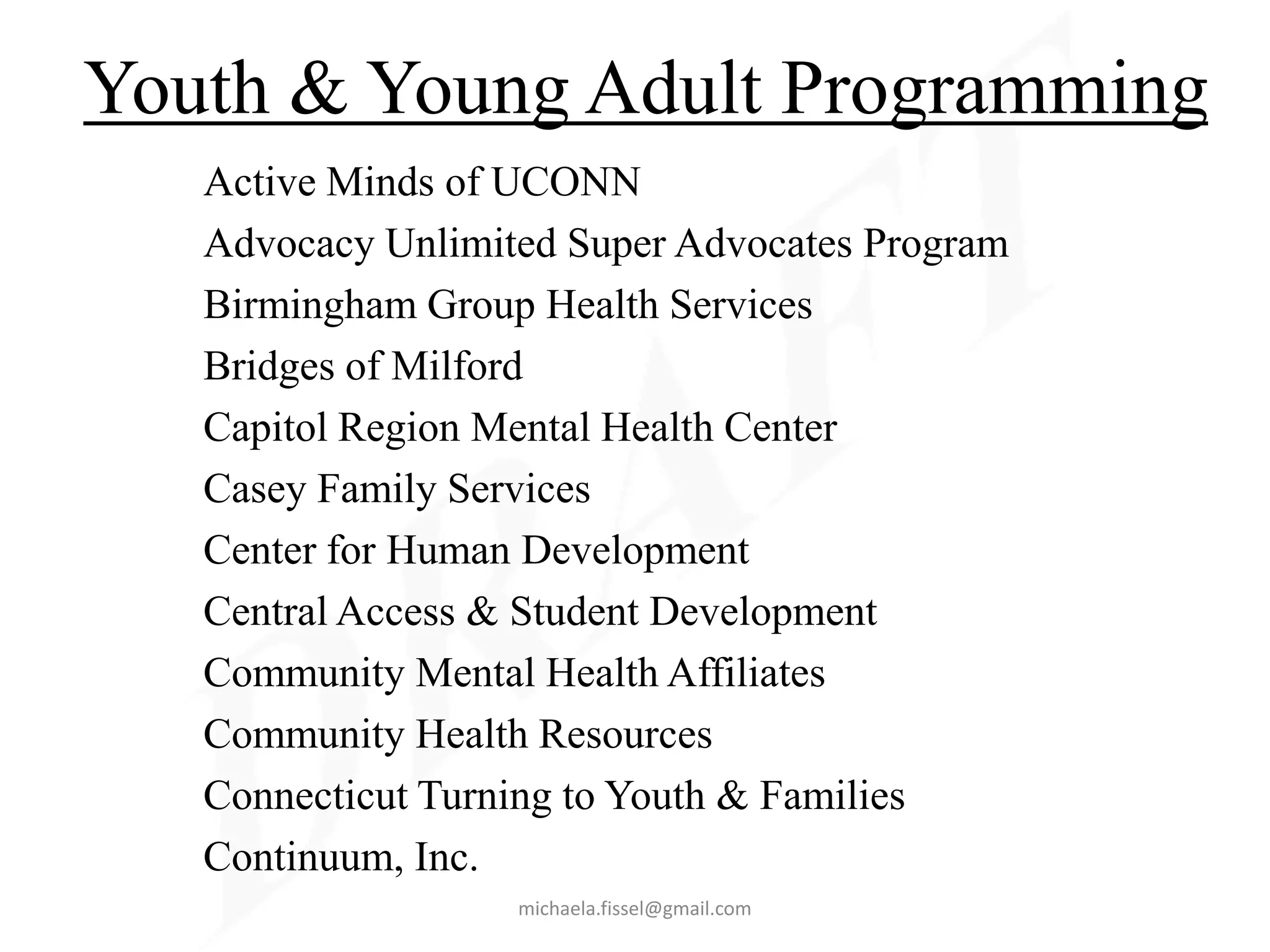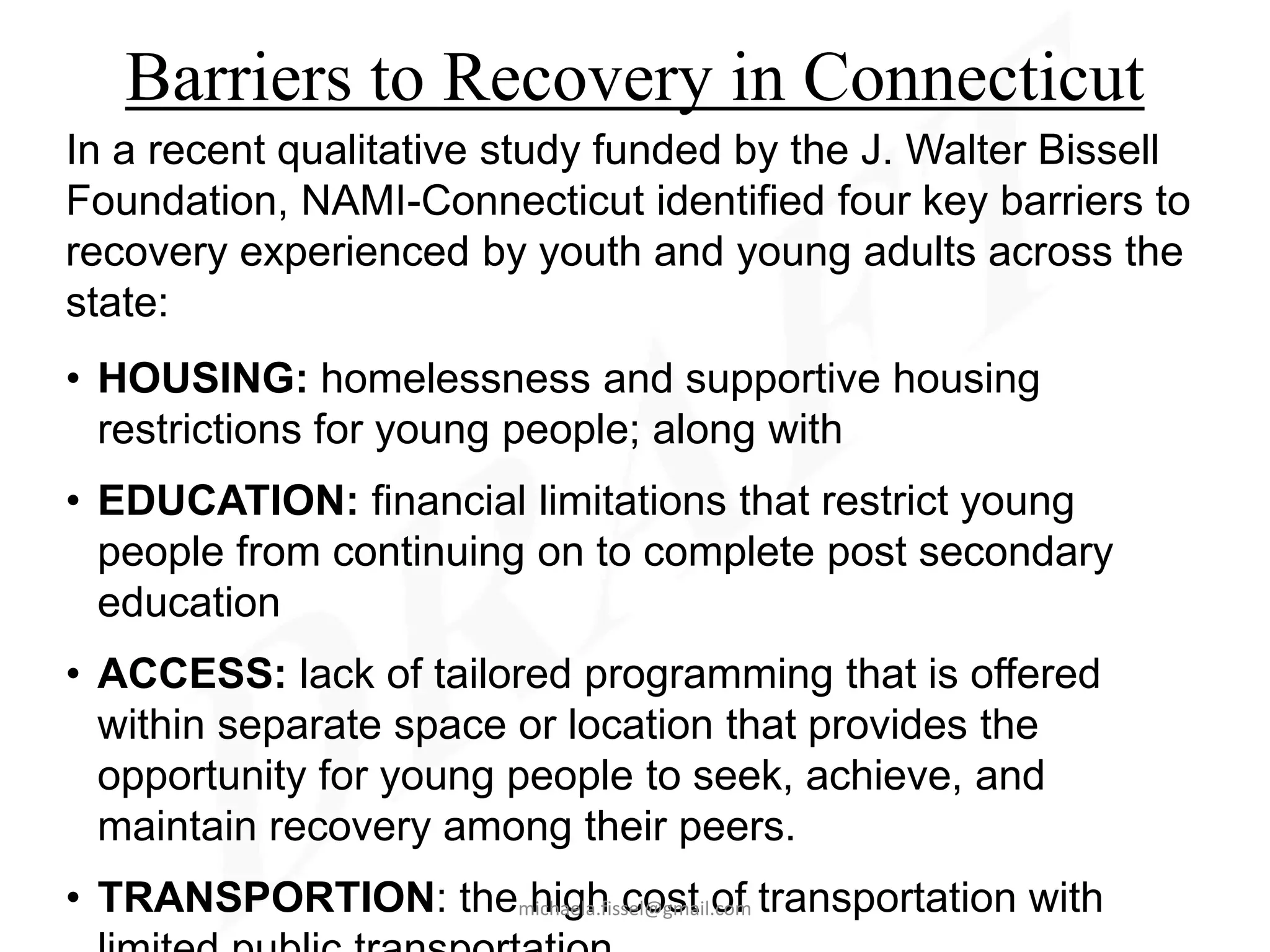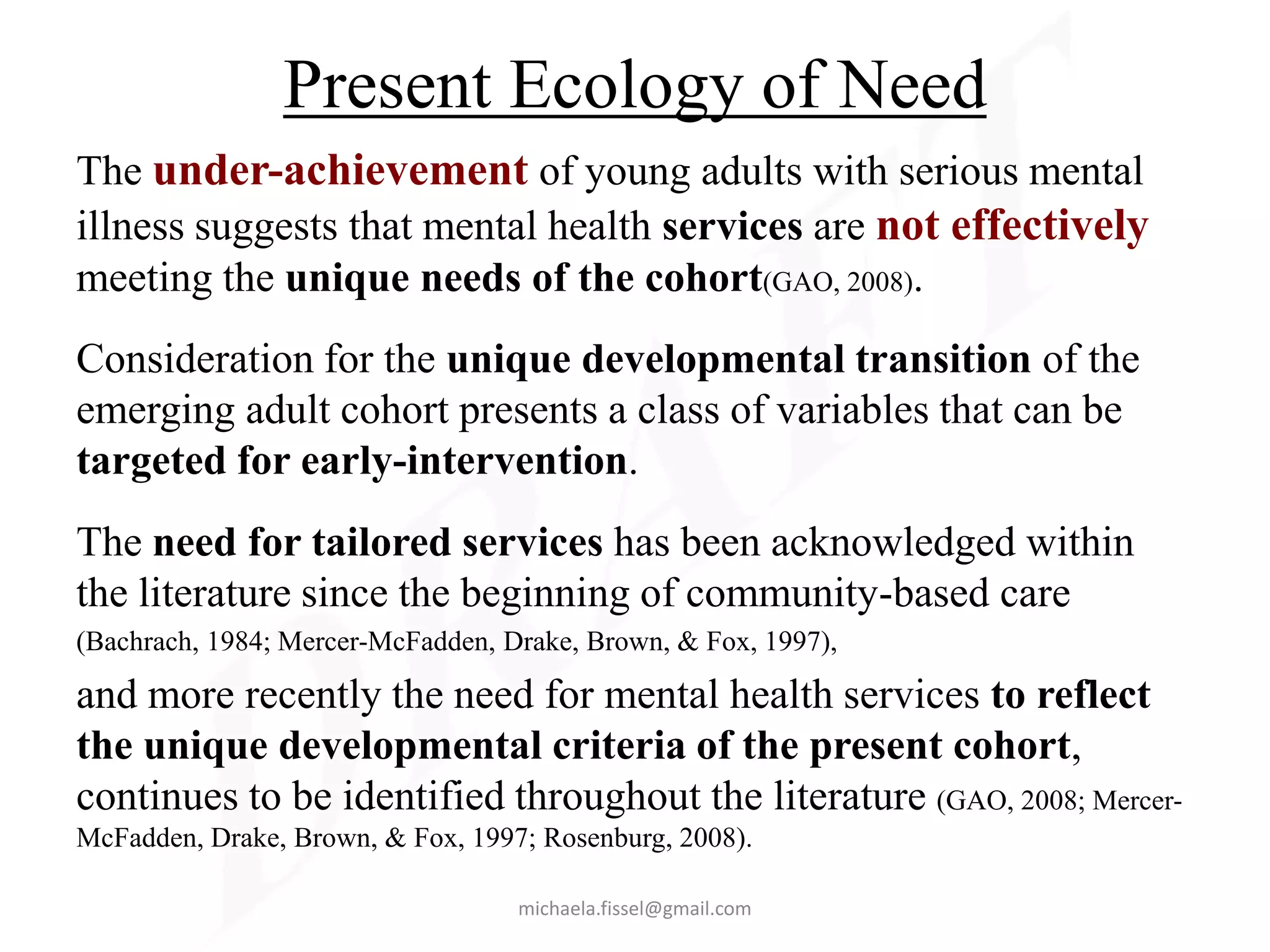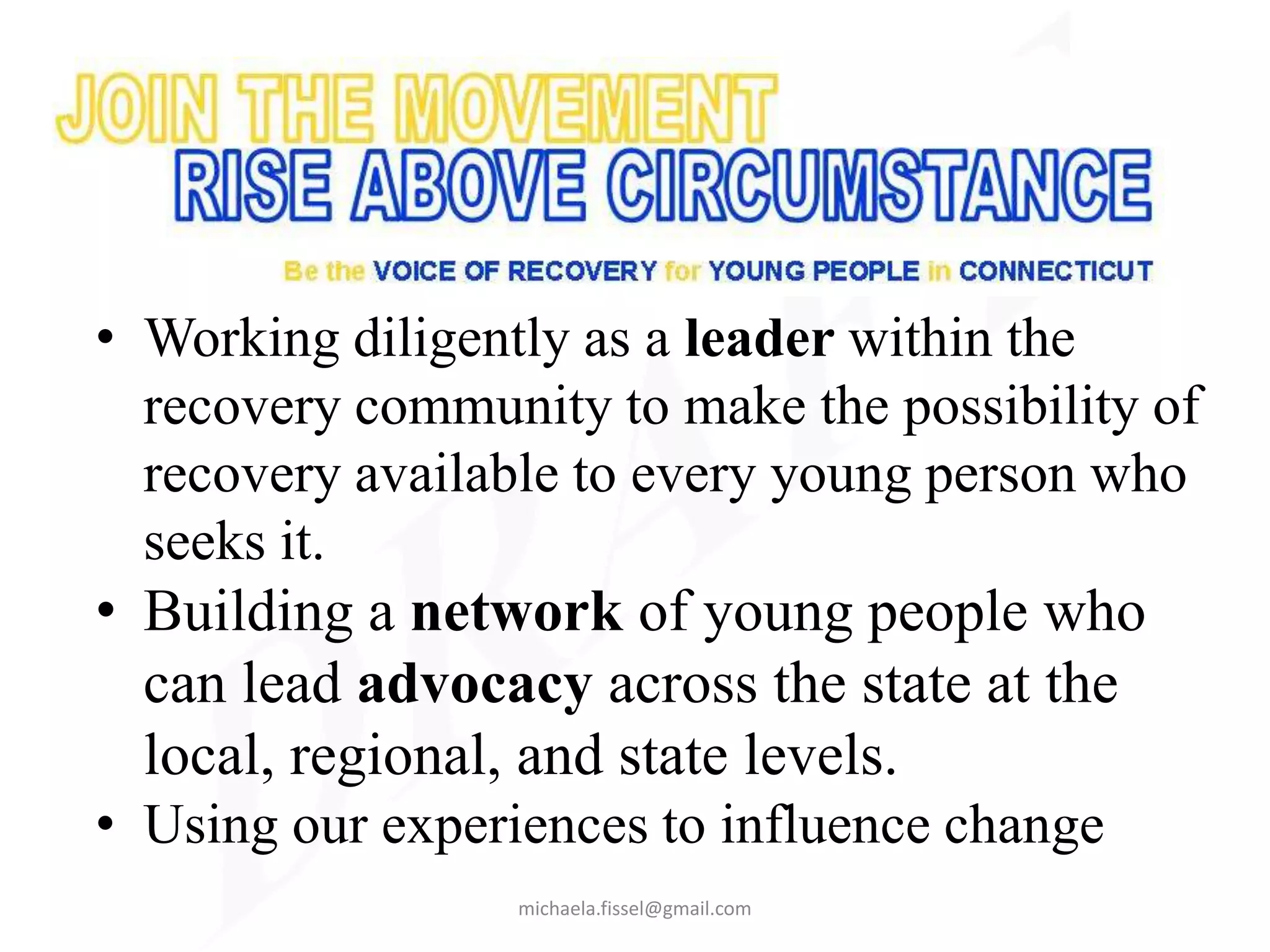Deinstitutionalization in the 1950s and 1960s led to the closure of most psychiatric institutions and a shift to community-based mental healthcare. However, services were designed for chronic patients and did not meet the needs of young adults experiencing early-onset serious mental illness. Young adulthood from 18-25 is a developmental transition period focused on achieving independence through education, employment, relationships and other criteria. Research shows serious mental illness is associated with lower educational achievement, higher unemployment and homelessness, and involvement in the criminal justice system for young adults, indicating difficulties with this transition. Tailored mental health services are needed that address the unique developmental needs of this emerging adult cohort.

